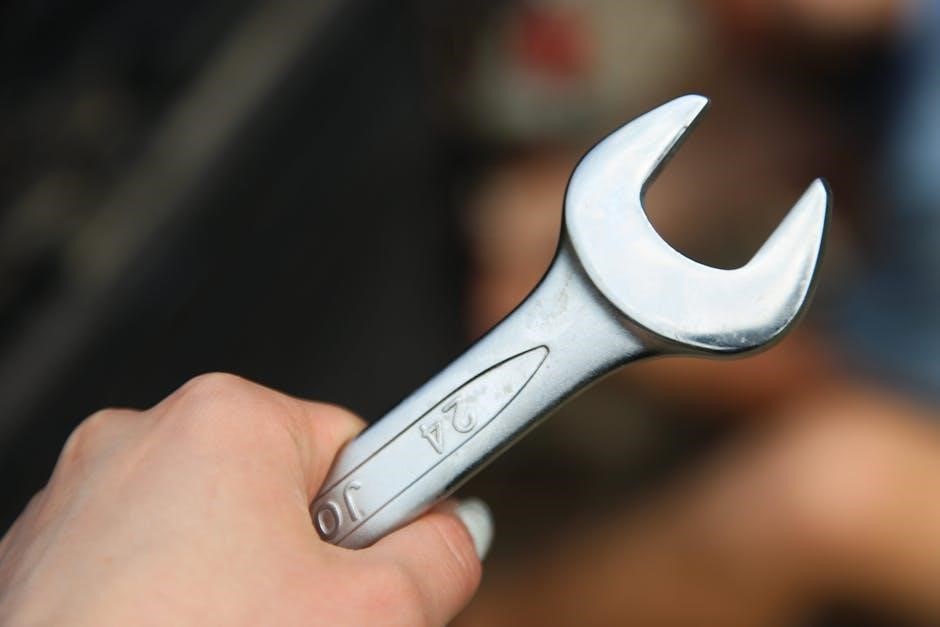The Boss RC-3 Loop Station is a compact, powerful pedal-type recorder designed for guitarists and bassists, offering up to three hours of stereo recording and 99 phrase memories․
1․1 Overview of the Boss RC-3
The Boss RC-3 Loop Station is a versatile and compact pedal-type recorder designed for guitarists and bassists․ It allows users to record, playback, and layer audio phrases with ease, making it ideal for live performances and practice sessions․ Featuring stereo recording capabilities, the RC-3 offers up to three hours of recording time and stores up to 99 phrase memories․ Its compact design makes it a great addition to any pedalboard, while its intuitive controls provide a user-friendly experience․ The RC-3 also includes a rhythm guide with tap tempo functionality, enabling musicians to create synchronized loops effortlessly․ With USB connectivity for transferring files and compatibility with external devices, the RC-3 is a powerful tool for musicians seeking to expand their creative possibilities․ Its robust features and portability have made it a favorite among professionals and hobbyists alike․
1․2 Key Features of the Boss RC-3
The Boss RC-3 Loop Station boasts an array of impressive features designed to enhance musical creativity and performance․ It offers 99 phrase memories, each capable of storing up to three hours of stereo recording, providing ample space for storing loops and one-shot phrases․ The pedal includes a rhythm guide with realistic drum patterns, allowing for precise timing and synchronization․ Tap tempo functionality enables easy adjustment of loop speeds during live performances․ Additionally, the RC-3 features undo/redo capabilities, giving users the flexibility to correct mistakes without disrupting their workflow․ Its USB connectivity allows for seamless file transfer between the device and a computer, making it easy to manage and backup recordings․ The compact design, coupled with battery or AC power options, ensures versatility and convenience for musicians on the go․ These features make the RC-3 a powerful tool for both professional and hobbyist musicians․

Product Specifications
The Boss RC-3 Loop Station is a compact stereo stompbox with up to three hours of recording time, 99 phrase memories, and USB 2․0 compatibility for file transfer․
2․1 Technical Specifications
The Boss RC-3 Loop Station features up to three hours of stereo recording time and storage for 99 phrase memories․ It includes stereo input and output for high-quality audio processing․ The device supports rhythm sounds, tap tempo functionality, and undo/redo options for flexible loop management․ USB 2․0 connectivity enables easy file transfer between the pedal and a computer․ The RC-3 operates on a single 9-volt battery or an optional AC power supply, ensuring versatility for both portable and studio use․ Its compact design makes it ideal for musicians seeking a powerful yet space-saving looping solution․ With robust features and user-friendly controls, the RC-3 is a versatile tool for guitarists and bassists alike, offering exceptional performance and reliability in a durable stompbox format․
2․2 System Requirements
The Boss RC-3 Loop Station is compatible with USB 2․0 for file transfers and requires a compatible operating system for computer connectivity․ It operates on a single 9-volt battery or an optional AC power supply․ For optimal performance, connect the MONO OUTPUT to a high-quality amplifier, such as a Roland JC-120․ The RC-3 supports stereo input and output, ensuring compatibility with a wide range of audio equipment․ While it does not require specific software for basic operation, USB connectivity allows integration with computers for file management․ The device is designed for use with guitars, basses, and external audio players, making it versatile for various musical applications․ No additional hardware is necessary beyond a power source and standard audio cables, ensuring ease of use and setup for musicians of all levels․
2․3 Compatibility Information
The Boss RC-3 Loop Station is designed to integrate seamlessly with a variety of musical equipment and systems․ It is fully compatible with USB 2․0, enabling easy file transfers between the device and your computer․ The RC-3 supports WAV file imports and exports, making it versatile for both live performances and studio recordings; It is compatible with guitars, basses, and external audio players, offering stereo input and output for high-quality sound reproduction․ The pedal also works with Boss’s range of accessories and power supplies, ensuring reliable operation․ Additionally, the RC-3 is compatible with a wide range of amplifiers, including the Roland JC-120, and operates on a standard 9-volt DC power supply․ Its compact design and universal connectivity make it suitable for musicians using diverse setups and equipment configurations․

Installation and Setup
The Boss RC-3 Loop Station is easy to install and set up, connecting to amps like the Roland JC-120 and operating on a 9-volt battery or AC adapter for reliable performance․
3․1 Unboxing and Hardware Setup
Unboxing the Boss RC-3 Loop Station reveals the pedal, a mono input cable, and an owner’s manual․ Hardware setup is straightforward: connect the pedal to your guitar or bass using the MONO INPUT jack and link the MONO OUTPUT to your amplifier, such as a Roland JC-120․ Power the device with a 9-volt battery or an optional AC adapter․ The RC-3 is compact, making it easy to integrate into your pedalboard․ Ensure the battery is fresh, as the pedal displays a low-battery indicator when power runs low․ Properly connecting the inputs and outputs ensures optimal performance․ Familiarize yourself with the pedal’s controls, including the footswitch, level knob, and navigation buttons․ This setup process ensures you’re ready to start recording and looping right away․
3․2 Software and Driver Installation
Installing software and drivers for the Boss RC-3 Loop Station is essential for USB functionality․ Download the latest BOSS drivers from the official Roland website to ensure compatibility with your computer․ Connect the RC-3 to your PC or Mac via the USB port, and follow the on-screen instructions to install the drivers․ Once installed, you can transfer WAV files between the pedal and your computer․ The USB connection also allows for firmware updates, which are crucial for maintaining optimal performance․ Ensure your operating system is compatible, typically Windows 7 or later or macOS 10․6 or newer; Proper installation enables seamless file management and enhances the RC-3’s capabilities, making it easier to organize and backup your loops․ Always verify the authenticity of downloaded files to prevent potential software issues․ This step is vital for unlocking the full potential of the RC-3․
3․3 Connecting to External Devices
Connect the Boss RC-3 Loop Station to external devices using its stereo input and output jacks․ For guitar or bass, plug into the MONO INPUT, while the MONO OUTPUT connects to your amplifier or mixing board․ For stereo sources, use the STEREO INPUT․ A Y-cable can adapt mono sources to stereo inputs․ The USB port enables file transfers to and from your computer, allowing you to manage loops and backup your work․ Ensure your devices are powered on and set to the correct input channels․ For optimal sound quality, use high-quality cables and adjust levels appropriately․ The RC-3 can also be powered via an optional AC adapter or a 9-volt battery․ Proper connections ensure seamless integration with your musical setup, enhancing your looping experience․ Always refer to the manual for specific connection diagrams and compatibility details․ This ensures your RC-3 operates at its best․

Basic Operations
The Boss RC-3 allows recording, looping, and overdubbing audio phrases with ease․ Use the pedal to start/stop recording, layer overdubs, and manage playback of your loops seamlessly․ Perfect for live performances and practice sessions, enabling intuitive creation and control of musical ideas․ Explore the fundamentals of looping with precision and creativity at your fingertips․ This section covers the essential functions to get you started with looping․ Discover how to record, play back, and overdub phrases efficiently, making the RC-3 a versatile tool for musicians․ Take your music to the next level with these straightforward yet powerful operations․ The RC-3 is designed to enhance your musical workflow effortlessly․
4․1 Recording and Looping Basics
Recording and looping with the Boss RC-3 is straightforward․ Press the pedal to start recording, and press again to stop․ Your audio is instantly looped․ Use the REC button to initiate recording and the STOP button to end․ The LED indicator changes color to show recording status․ Each loop is stored in a phrase memory, allowing quick access․ The RC-3 supports up to three hours of recording time, stored across 99 phrase memories․ For basic looping, connect your guitar to the MONO INPUT and your amp to the MONO OUTPUT․ Power the pedal with a 9V battery or optional AC adapter․ The TAP TEMPO feature enables precise tempo control․ Start with a simple setup to explore the fundamentals of recording and looping․ This section guides you through the essential steps to begin creating loops․
4․2 Playback and Overdubbing
Once recorded, your loop can be played back seamlessly by pressing the pedal․ The LED indicator will flash green during playback, indicating the loop is active․ Overdubbing allows you to layer additional sounds over your recorded loop․ Simply press the pedal again to enter overdub mode, where the LED turns red․ Adjust the volume of your overdub using the LOOP VOLUME knob․ The RHYTHM GUIDE and TAP TEMPO features help maintain precise timing during overdubbing․ You can also use the UNDO/REDO function to correct mistakes․ Playback and overdubbing are essential for creating layered, intricate performances․ Experiment with these features to enhance your live sessions and recordings, leveraging the RC-3’s intuitive controls to craft dynamic soundscapes․ This functionality makes the RC-3 a versatile tool for musicians seeking to expand their creative possibilities․
4․3 Undo/Redo Functionality
The Boss RC-3 Loop Station features an intuitive UNDO/REDO system, allowing you to correct mistakes or adjust overdubs easily․ By pressing the pedal once, you can undo the last overdub layer․ Pressing it again restores the previously undone layer․ This feature is particularly useful during live performances, where mistakes can occur․ The LED indicator provides clear feedback: it flashes orange during the undo process․ The UNDO/REDO function ensures that you can maintain a polished performance without interruption․ This functionality enhances your ability to experiment and refine your loops on the fly, making the RC-3 a reliable companion for both practice and live gigs․ The simplicity of this feature, combined with its effectiveness, underscores the RC-3’s user-friendly design and commitment to delivering professional-grade looping capabilities․

Advanced Features
The Boss RC-3 Loop Station offers advanced features like Rhythm Guide, Tap Tempo, and Phrase Memories, allowing for dynamic looping and seamless integration with external devices via USB connectivity․
5․1 Rhythm Guide and Tap Tempo
The Boss RC-3 Loop Station features a built-in Rhythm Guide with realistic drum patterns, designed to assist musicians in maintaining precise timing during looping sessions․ This feature is particularly useful for solo performers or those practicing without a drummer․ The Tap Tempo function allows users to set the tempo by tapping their foot, ensuring seamless synchronization with live performances․ Together, these tools enhance creativity and accuracy, making it easier to layer loops and overdubs effectively․ The rhythm volume can also be adjusted to blend perfectly with your recordings, providing a professional touch to your music․ These advanced features make the RC-3 an indispensable tool for musicians aiming to create polished, intricate loops with ease and precision․
5․2 Phrase Memories and Management
The Boss RC-3 Loop Station offers 99 phrase memories, each capable of storing up to three hours of audio, providing ample space for extensive creative exploration․ These memories allow users to organize and recall loops efficiently, making it ideal for live performances and studio sessions․ The device also supports WAV file transfer via USB, enabling easy backup and management of your recordings on a computer․ Additionally, the RC-3 includes demo phrases (90-99) that cannot be recovered once deleted, emphasizing the importance of backing up important loops․ This robust memory management system ensures that musicians can focus on their craft without worrying about running out of storage or losing their work, making the RC-3 a reliable and versatile looping solution․
5․3 USB Connectivity and File Transfer
The Boss RC-3 Loop Station features USB 2․0 connectivity, enabling seamless file transfer between the device and your computer․ This allows you to import and export WAV files, making it easy to manage your loops and back up your creations․ The USB connection also facilitates updating the device’s firmware, ensuring you have the latest features and improvements․ By transferring files to your computer, you can free up memory on the RC-3 and organize your loops externally․ This feature is particularly useful for musicians who want to archive their work or share loops between devices․ The USB connectivity enhances the RC-3’s versatility, making it a practical tool for both live performances and studio recording sessions․ This ensures your musical ideas are always accessible and securely stored․

Troubleshooting and Maintenance
Troubleshooting the Boss RC-3 involves identifying common issues like low battery warnings or audio glitches․ Regular maintenance includes cleaning the pedal and updating firmware to ensure optimal performance and longevity․
6․1 Common Issues and Solutions
Common issues with the Boss RC-3 Loop Station include low battery warnings, audio glitches, and connection problems․ To resolve low battery warnings, replace or recharge the battery promptly․ For audio glitches, restart the device or reset it to factory settings․ Connection issues can often be fixed by checking cable connections or updating drivers․ Additionally, users may experience loop playback errors, which can be addressed by ensuring the latest firmware is installed․ Regularly cleaning the pedal and ensuring proper power supply can prevent many of these issues․ If problems persist, consulting the user manual or contacting Boss support is recommended for further assistance․
6․2 Resetting the Device
To reset the Boss RC-3 Loop Station, hold down the pedal while turning on the power․ Release the pedal when you hear a beep, and the device will revert to its factory settings․ This process resets all user settings, clears phrase memories, and restores default parameters․ Note that resetting will erase all user-recorded loops and phrases, so it’s essential to back up important data via USB before performing a reset․ This feature is useful for troubleshooting or starting fresh with a clean configuration․ Always ensure the device is powered off before attempting a reset to avoid data corruption․ For detailed steps, refer to the official Boss RC-3 manual or contact support for assistance․
6․3 Routine Maintenance Tips
Regular maintenance ensures optimal performance of the Boss RC-3 Loop Station․ Clean the pedal and exterior with a soft cloth to prevent dust buildup․ Check all input and output jacks for debris and clean them gently with a cotton swab․ Avoid using harsh chemicals, as they may damage the finish or internal components․ Update the firmware periodically to access the latest features and improvements․ Store the device in a dry, cool environment to protect it from moisture and extreme temperatures․ For battery-powered use, replace the battery when the low-battery indicator appears to prevent data loss․ Always use a high-quality power supply to avoid electrical issues․ By following these routine maintenance tips, you can extend the lifespan and maintain the reliability of your RC-3 Loop Station․

Resources and Support
Access official manuals, FAQs, and support documents for the Boss RC-3 Loop Station on the Boss website․ Contact Boss support for assistance with troubleshooting or technical inquiries․
7․1 Official Boss RC-3 Manual Links
The official Boss RC-3 Loop Station manuals are available for free download on the Boss website․ Users can access the Owners Manual and Training Manual in multiple languages, including English, Spanish, and Russian․ These manuals provide detailed instructions for operating the device, troubleshooting, and maximizing its features․ To download, visit the Boss support page, navigate to the RC-3 Loop Station section, and select the desired manual․ The PDF files are compatible with most devices, ensuring easy access to guidance․ Additionally, the official Boss website offers a comprehensive FAQ section and Knowledge Base for addressing common questions and technical inquiries․ For optimal performance, always refer to the official Boss RC-3 manual for accurate and reliable information․

7․2 Frequently Asked Questions (FAQs)
How do I record a loop on the Boss RC-3?
– Press the Looper pedal once to start recording and again to stop․ Your phrase will automatically loop․
Can I transfer loops to my computer?
– Yes, use the USB port to connect the RC-3 to your computer and transfer WAV files․
What is the maximum recording time?
– The RC-3 offers up to three hours of stereo recording time across 99 phrase memories․
How do I use the rhythm guide?
– Press the Rhythm button to select from pre-installed drum patterns, enhancing your looping experience․
How do I reset the RC-3 to factory settings?
– Hold the EXIT button while powering on the device․
Why is my RC-3 not turning on?
– Check the battery level or ensure the AC adapter is properly connected․
Can I use external audio sources?
– Yes, connect external devices via the stereo input to record and loop external audio;
How do I undo a recording?
– Press the Undo/Redo button to revert your last recording or overdub․
For more details, refer to the official Boss RC-3 manual․
7․3 Contacting Boss Support
For assistance with the Boss RC-3 Loop Station, visit the official Boss support website․

– Submit a support ticket or chat with a representative for troubleshooting and technical inquiries․
– Explore the manuals and guides section for detailed instructions․
– Contact Boss support directly via phone or email for personalized help․
– Check the FAQ section for quick answers to common questions․
– Ensure to have your product serial number ready for efficient service․

– Visit authorized Boss dealers for hands-on support and repairs․
– Stay updated with the latest firmware and software updates․
– Join the Boss community forums for user discussions and tips․
– For warranty inquiries, contact Boss support with proof of purchase․
– International users can find local support contacts on the Boss website․
– Response times may vary, but support is available Monday-Friday during business hours․
– Keep your RC-3 manual handy for reference when contacting support․
– Boss support is committed to resolving issues promptly and effectively․